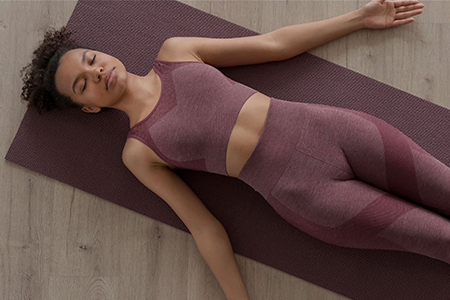A great number of people will scoff at the thought of yoga, but singularly fail to see the point of it and all the benefits that it can bring. Yet, equally, many of them are probably secretly wanting to know more about this exercise that has been so effective throughout history, yet so unchanged, that medical professionals often prescribe it for everything from post traumatic injury recovery to depression and anxiety. No matter your skepticism or open mindedness, here are some tips for beginners.
The first step is always a psychological one. Many yogis will advise you that yoga is about acceptance; acceptance of your place in the world, acceptance of yourself and your flaws, and of others. They also advocate a state of union between your thoughts and your present state. That essentially means being able to switch off and just live in the moment, all clichés aside.
The next part of yoga is about releasing expectations and throwing out any preconceived notions about yoga, about yourself and what you may achieve. Yoga means not expecting to suddenly get limber or to suddenly be free of all your anxieties.
Just accept what comes and work on being yourself.
This does not mean, however, that you cannot take advantage of yoga’s more well-known benefits. If you work at it, you’ll naturally approach peace and acceptance of the world, but you’ll also learn to meditate, control your breathing, and also enjoy greater bodily flexibility through a series of poses and disciplines. One of the other excellent bonuses of yoga is that you’re actually able to practice key tenets of it even if you’re not in a position to train and exercise. The mental exercises can be done sat at a desk, but the most effective part you can do anywhere is to notice and control your breathing. Once you have this down and committed to habit, you will be able to apply it to any situation where you feel stressed, fearful or simply in need of a little relaxation.
That’s all well and good, but you’re probably wondering about the physical side of things. The beginners’ guide, if there is such a thing, would suggest the downward-facing dog, child’s pose, and savasana. With all three of these, they should be done with your hands and feet touching the floor, your back extended and straight, your hips relaxed and your breathing in check. You need to ideally get these three moves in the bag before committing to anything more complicated.
As a beginner, you’re bound to get quite tired easily. That’s fine; your body is probably not used to hard work of this type, and many of the mental exercises will start to release a lot of inner tension, so as you learn to become accepting, open minded and ‘in the moment’, your body is going to embrace the calm and probably catch up on a lot of lost rest. After your first few yoga classes you’re probably going to get home and fall asleep on the sofa.
The best advice for any beginner, however, is to find a class that caters to beginners. Although the very nature of yoga is about throwing out expectations, that doesn’t mean you should throw out the help of experienced and skilled yoga experts who have spent time mastering the key tenets of it. Through these classes you’ll get an insight into the psychological as well as physical exercises, and you’ll be eased in and ‘washed’ of outside influence and expectations so you can begin your yoga journey as it was intended, as well as feeding off of all the positive energy from other yoga enthusiasts.


